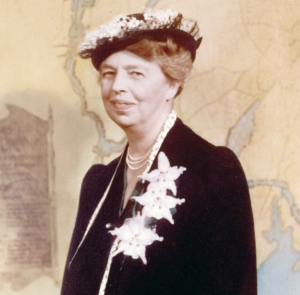Getting Your Favorite Chocolate May Come at a Price

Although fruits and vegetables are great for our health, sometimes we crave foods that will satisfy our sweet tooth. For many, that means chocolate. Chocolate comes in all kinds of shapes, sizes and flavors. It could be the heart-shaped milk chocolates for Valentine’s Day or the Cocoa Puffs in your bowl of cereal. It’s all delicious and satisfies our cravings. But while we often think of the health impacts of our sweet tooth cravings, we rarely think of the source and production that goes into creating the chocolate we consume.
We’re living in a decade driven by information. People have taken advantage of this by becoming informed consumers. Many people have changed their diets due to the information consumed from news networks and social platforms. One major change is the movement to more plant-based diets in exchange of meat. Most people have yet to make that sustainable switch with chocolate.
Cocoa originates from cocoa fruit, which grow on cacao trees. Up to 70% of the world’s cocoa is produced in tropical regions around the equator, particularly West African countries such as the Ivory Coast, Ghana, Nigeria and Cameroon. The majority of the cocoa is produced in the Ivory Coast and Ghana. Alone, they are responsible for two-thirds of the world’s chocolate. Though the chocolate industry is worth billions, the majority of Ghana and the Ivory Coast’s populations live in poverty.
It is evident that Ghanaians and Ivorians are not benefiting from this lucrative industry. The current president of Ghana, Nana Akufo-Addo said, “Chocolate is a $100-billion dollar industry and we who produce 65% of the raw material make less than $6 billion from the sweat and toil of our farmers.” The chocolate industry illustrates a colonial style relationship between Africa and the Western world. Resource extraction from African countries costs African countries more than benefiting them. For the Ivory Coast and Ghana, the cost is often rigid working conditions that leave many workers injured and impoverished.
According to the Make Chocolate Fair organization, growing cocoa is strenuous manual work. The cocoa tree’s flowers produce large cocoa pods which need to be cut with sharp knives or machetes. Despite the risk, the majority of cocoa production provides the livelihood of farmers in Ghana and the Ivory Coast.
In Ghana and the Ivory Coast, the majority of cocoa farmers are children. Over 2 million children work in cocoa fields in the Ivory Coast and Ghana. The Slave Free Chocolate Organization suggests that Nestlé, Hershey, Cargill, Cadbury and Barry Callebaut have all admitted to having child labor. According to the organization, the companies vowed to eliminate child labor in 2001, but little progress has been made towards that goal. In 2019, the L.A. Times reported that 2.1 million children were still working on cocoa farms.
Poverty is what drives people in Ghana and the Ivory Coast to start working at a young age. According to a study done by The Food Empowerment Project, some children end up working on the cocoa farms because traffickers deceive them into thinking they’ll get paid very well. Other children are sold to traffickers or farmers by their own relatives. The Food Empowerment Project study states that children are often abducted from small villages in neighboring countries such as Mali and Burkina Faso. When children are taken into the cocoa farmers’ hands, they often do not see their own families for years. According to the study, some kids as young as five are recruited. The conditions these children are put in are extremely harsh.
A typical work day for the children lasts from dawn until dusk. The children often handle hazardous tools, such as chainsaws and machetes, to clear the forests, and many children have scars from handling such equipment. After the children obtain the bean pods, they pack them into sacks that often weigh more than the children themselves. The bean pods contain beans, which are the seeds of the fruit that eventually get transformed into cocoa powder or chocolate. Carrying these heavy sacks around is very strenuous, but when children do not work swiftly, they are gruesomely beaten.“When people eat chocolate, they are eating my flesh,” said one child worker.
Though multiple nongovernmental organizations have attempted to eliminate this grisly form of child labor, there is only so much they can do. The chocolate industry has to take better action. Although Hershey’s and other huge chocolate companies vowed to eliminate child labor, a study done in 2020 proved otherwise. According to an article by The Morning Call, data in 2020 show that up to 2 million children are still working on cocoa farms. Some major changes need to be made in the corporate chocolate industry.
For decades, buyers determined the price of the cocoa, but in 2019, suppliers started negotiating. That same year, Ghana and the Ivory Coast saw some success when they made the historic decision to halt the sale of cocoa on the international market until the cocoa farmers could get fair prices. In 2020, another strategy to combat cocoa farmers’ poverty and human rights violations was made when the Ivory Coast and Ghana cancelled all cocoa sustainability programs run by America. The strategy was specifically aimed at cancelling Hershey’s sustainability programs, which are rumoured to enable Hershey’s to avoid paying the cocoa Living Income Differential (LID) premium aimed at combating farming poverty. Ghana and the Ivory Coast also threatened to take away Hershey’s license to operate in their countries if they failed to pay the LID premium.
Not every American chocolate company is linked to corruption. Alter Eco is a company that has proven not to violate human rights. Its cocoa is sourced from South America. Cocoa outsourced from South America has yet to be involved in corruption and human rights violations, according to the Food Empowerment Project. Hopefully other companies will soon follow suit. Due to a growing awareness of the ghastly production of chocolate, more people are becoming informed and making better decisions. This could ultimately lead markets to improve their practices.
Photo credit: https://craftsense.co/craft-culture/child-labor-in-cacao-production/






